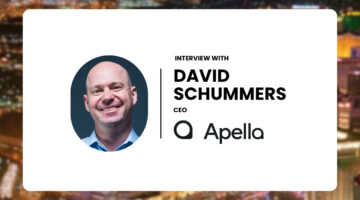
To all the healthcare startups out there: bravo. You’re reimagining what’s possible while building faster, smarter, and leaner solutions for some of medicine’s most pressing challenges. You’re transforming patient access and outcomes, personalizing care through AI, and shifting focus from paperwork to patients. You’re attracting billions in venture capital, especially in AI healthcare, and doing it all at a pace the traditional healthcare system can’t match.
So why are so many of you still relying on the same outdated agency of record (AOR) models for marketing and brand building?
It’s not a secret that healthcare startups thrive on speed and agility. To support this, you need creative partners who understand your value proposition quickly and translate it into bold, resonant ideas. You need strategic brains that can think like a founder, not like a pitch deck. And you need execution that’s fast, focused, and built for budget-conscious growth. Too often, large agencies deliver the opposite: bloated onboarding processes, ever-fluctuating teams staffed based on availability (not suitability), inflated fees and creativity that feels built for category, not culture.

Transforming the OR: CEO Reveals Game-Changing AI Tech for Better Efficiency
How Apella leverages technology to increase OR efficiency.
That may work for large pharmaceutical companies navigating regulatory mazes and long planning cycles. AORs can be a good fit for brands with seven-figure budgets, layered stakeholder groups, and years-long timelines. But for a healthcare startup racing to build brand awareness, attract funding, or get a product to market, that model is too slow and too expensive.
Modern healthcare brands need a different kind of partner, one that can operate in days and weeks, not months and quarters. You need senior creative professionals who know the space and can move from idea to execution without dragging it through rounds of unnecessary approvals. Startups can’t afford to fund overhead; they need to fund impact.
Fortunately, new models are emerging to meet that need, offering project-based engagements, bespoke teams, and access to senior talent without the layers and markups of legacy agencies. Others operate as curated networks, assembling the right people for the task — whether it’s naming, brand identity, campaign work, or launch strategy. Built without the baggage of traditional agencies, these partners deliver sharper thinking and faster results at a fraction of the cost.
If your brand is trying to reimagine the treatment of a chronic disease or improve diagnostics with AI, shouldn’t your creative partners embody the same spirit of innovation? These partners should reflect the boldness you bring to the healthcare space, not slow it down.
And yet, many startups still gravitate toward big-name agencies out of habit or perceived credibility. But the truth is, in today’s healthcare landscape, credibility doesn’t come from an agency logo. It comes from an idea that lands, a brand platform that manifests quickly, and results that speak for themselves. In a space this competitive and saturated, speed and authenticity win.
Choosing an alternative to the AOR model doesn’t mean sacrificing quality. In fact, it often means accessing better talent. Many of the best creative and strategic minds have left big agencies to work independently or in smaller collectives, where they can focus on doing great work without navigating internal politics.
So, before you sign a six-figure retainer or commit to a year-long contract with an AOR, ask yourself: “Does this model serve the way we work?”
Photo credit: Getty Images, pixelliebe
Brett Banker is the co-founder of X&O, a new approach to marketing with big ideas, at pace. Brett is the former managing partner at Anomaly where he worked on NFL, P&G, Panera, MLB and Pfizer.
This post appears through the MedCity Influencers program. Anyone can publish their perspective on business and innovation in healthcare on MedCity News through MedCity Influencers. Click here to find out how.









